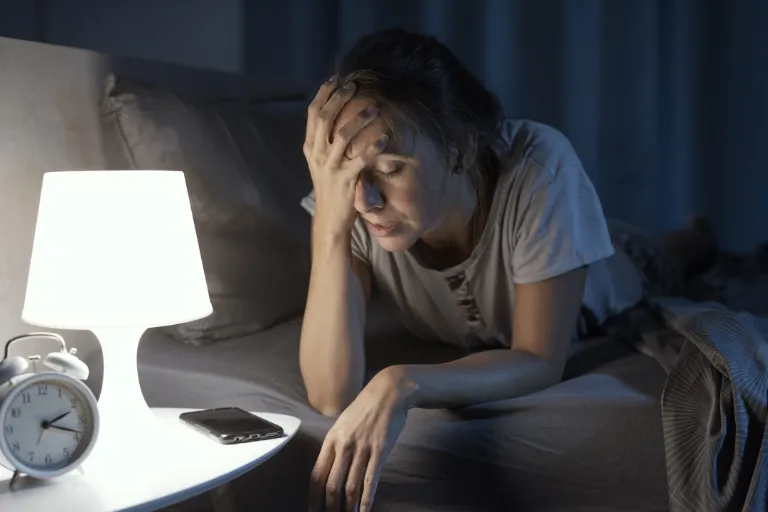Key Points
- DSPS (Delayed Sleep‑Wake Phase Disorder) causes sleep onset two or more hours later than typical, leading to difficulty waking in the morning.
- Genetic factors (e.g., CRY1, PER3) and light exposure patterns contribute to altered circadian rhythm.
- Diagnosis relies on history, sleep diaries, actigraphy, and criteria defined by ICSD‑3 / AASM.
- Evidence‑based strategies include bright light therapy, timed melatonin, behavioral techniques, chronotherapy, and lifestyle adjustments.
- Consistency and daily adherence are essential; relapse is common without follow‑up.
A Night Owl’s Plight
Imagine you consistently fall asleep around 2 a.m. or later, and waking at 7 a.m. for work or school feels like climbing Everest. You get the required eight hours—but from 4 a.m. to noon. That conflict between your internal clock and daily schedules can lead to chronic tiredness, social isolation, and missed opportunities.
Why It Matters
DSPS isn’t just being a late sleeper—it’s a scientific mismatch between your biological clock and societal time. The American Academy of Sleep Medicine notes that untreated DSPS can be linked to mood disruptions, lower academic or work performance, and increased risk of chronic tiredness over time. Studies estimate up to 3–5% of teens and young adults meet diagnostic criteria, with prevalence climbing to 7–16% in adolescents depending on the screening method (American Academy of Sleep Medicine, 2023; Sleep Foundation, 2022).
Signs & Daily Impact
People with DSPS often describe:
- Falling asleep two to six hours later than conventional bedtime, with little variability.
- Feeling refreshed if allowed to sleep on their preferred schedule, but struggling when forced to wake early.
- Experiencing what researchers call “social jet lag”—a chronic misalignment between biological time and social obligations (Roenneberg et al., 2019).
It often starts in adolescence and can persist into adulthood, sometimes being misdiagnosed as primary Sleep Problems or mood-related issues due to overlapping complaints.
The Science Behind the Delay
At the brain’s core is the suprachiasmatic nucleus (SCN)—the master clock that regulates circadian rhythms—alongside genes such as CRY1 and PER3 that set the pace of the clock. A mutation in CRY1 has been shown to slow the internal clock, pushing sleep onset later by hours (Patke et al., 2017). Variations in PER3 are associated with evening chronotypes and DSPS tendencies (Zhang et al., 2016).
In DSPS, the release of melatonin—the hormone that signals it’s time to sleep—is delayed. Clinical trials have shown that administering melatonin in small doses (0.3–3 mg) a few hours before the natural onset can phase‑advance sleep timing, especially when paired with morning bright light exposure (Mundey et al., 2005). Correct timing is critical: taken too late, melatonin may have little effect or even shift the clock further back.
Getting the Diagnosis Right
Diagnostic criteria from the International Classification of Sleep Disorders, Third Edition (ICSD‑3) require:
- A habitual sleep onset delayed by at least two hours compared to desired times, persisting for three months or more.
- Consistent difficulty waking at socially acceptable times.
- Objective confirmation through sleep diaries or actigraphy for at least two weeks.
Polysomnography is used primarily to rule out other sleep disorders (AASM, 2023).
Practical Strategies That Help
1. Morning Bright Light Therapy
Exposure to 10,000 lux of bright light within 30 minutes of waking—for 30 to 60 minutes—helps reset the circadian clock earlier. Outdoor sunlight is ideal, but clinically validated light boxes are also effective. Studies show that morning light advances the circadian rhythm, while evening light delays it, making screen-time management crucial (Shirani & Louis, 2009).
2. Timed Melatonin Supplementation
Low-dose melatonin (0.3–3 mg) taken 1.5–6 hours before natural sleep onset has been shown to advance circadian timing in DSPS (Mundey et al., 2005). Lower doses often work as well—or better—than higher doses, with fewer side effects.
3. Chronotherapy
This structured method progressively shifts bedtime later by one to three hours each day, cycling through the 24-hour clock until the desired bedtime is reached. While effective, it requires strict adherence and is best done under clinical supervision (Czeisler et al., 1981).
4. Sleep Hygiene & Behavioral Support
- Keep consistent wake times, even on weekends.
- Limit light exposure after sunset; use dim or amber lighting in the evening.
- Avoid caffeine in the afternoon and evening.
- Incorporate relaxation techniques or CBT‑I‑style behavioral strategies to reduce conditioned arousal (Bootzin & Epstein, 2011).
Research Spotlight
Multiple controlled trials have demonstrated that combining morning bright light therapy with early evening melatonin produces greater phase advances than either method alone. In a randomized trial published in Sleep, participants who used both interventions shifted their sleep onset 1.5–2 hours earlier within four weeks, reporting better morning alertness and reduced daytime tiredness compared to controls (Mundey et al., 2005). Additional research confirms that maintaining consistent wake times and restricting evening light significantly improves the long‑term stability of these gains (Shirahama et al., 2020). These findings reinforce that multi‑modal strategies, grounded in both biological and behavioral adjustments, are most effective for DSPS.
Why Long‑Term Success Can Be Challenging
Even with effective therapy, relapse is common. In one follow‑up study, nearly 90% of participants reverted to their original delayed schedule within a year of stopping melatonin, with 29% reverting within a week (Shirahama et al., 2020). This underscores the importance of ongoing adherence to light exposure, melatonin timing, and consistent routines.
When to Seek Professional Advice
If delayed sleep timing disrupts work, school, or mood, it’s worth consulting a board-certified sleep specialist. They can order objective tests such as dim light melatonin onset (DLMO) measurements, actigraphy, or tailored behavioral plans.
Next Steps & Resources
- Start a sleep diary for two weeks.
- Add morning bright light and evening light reduction to your routine.
- Discuss timed melatonin with your health professional.
- Consider chronotherapy under expert guidance if needed.
- Use behavioral support to maintain gains.
Closing Thought
Living with DSPS can feel like your body is locked in another time zone. But with scientifically supported strategies—light, melatonin, behavioral structure—you can nudge your biological clock toward better alignment. The shift takes discipline, but the payoff in energy, mood, and daily functioning can be profound.
The article does not in any way constitute as medical advice. Please seek consultation with a licensed medical professional before starting any treatment. This website may receive commissions from the links or products mentioned in this article.
Subscribe for Free for more insightful health articles tailored to your needs.
Reference
- American Academy of Sleep Medicine. International Classification of Sleep Disorders, Third Edition (ICSD‑3). 2023.
- Sleep Foundation. “Delayed Sleep-Wake Phase Disorder.” 2022.
- Patke A, et al. Mutation of the human circadian clock gene CRY1 in DSPS. Cell. 2017.
- Zhang L, et al. PER3 polymorphisms and evening chronotype. Chronobiology International. 2016.
- Mundey K, et al. Phase‑dependent melatonin effects in DSPS. Sleep. 2005.
- Roenneberg T, et al. Social jetlag and circadian misalignment. Current Biology. 2019.
- Shirani A, Louis E. Light therapy for circadian rhythm sleep disorders. Cochrane Database of Systematic Reviews. 2009.
- Czeisler CA, et al. Chronotherapy for DSPS. Sleep. 1981.
- Bootzin RR, Epstein D. Stimulus control therapy for insomnia. In: Principles and Practice of Sleep Medicine. 2011.
- Shirahama S, et al. Long-term follow‑up of DSPS after melatonin cessation. Sleep Medicine. 2020.
- Bootzin, R. R., & Epstein, D. R. (2011). Understanding and treating insomnia. Annual Review of Clinical Psychology, 7, 435–458. https://doi.org/10.1146/annurev.clinpsy.3.022806.091516
- Chang, A.-M., Aeschbach, D., Duffy, J. F., & Czeisler, C. A. (2015). Evening use of light-emitting eReaders negatively affects sleep, circadian timing, and next-morning alertness. Proceedings of the National Academy of Sciences, 112(4), 1232–1237. https://doi.org/10.1073/pnas.1418490112
- Cheng, D. C. Y., Ganner, J. L., Gordon, C. J., Phillips, C. L., Grunstein, R. R., & Comas, M. (2021). The efficacy of combined bright light and melatonin therapies on sleep and circadian outcomes: A systematic review. Sleep Medicine Reviews, 58, 101491. https://doi.org/10.1016/j.smrv.2021.101491
- Mundey, K., Benloucif, S., Harsanyi, K., Dubocovich, M. L., & Zee, P. C. (2005). Phase-dependent treatment of delayed sleep phase syndrome with melatonin. Sleep, 28(10), 1271–1278. https://doi.org/10.1093/sleep/28.10.1271
- Patke, A., Murphy, P. J., Onat, O. E., Krieger, A. C., Özçelik, T., Campbell, S. S., & Young, M. W. (2017). Mutation of the human circadian clock gene CRY1 in familial delayed sleep phase disorder. Cell, 169(2), 203–215. https://doi.org/10.1016/j.cell.2017.03.027
- Saxvig, I. W., Wilhelmsen‐Langeland, A., Pallesen, S., Vedaa, Ø., Nordhus, I. H., & Bjorvatn, B. (2014). A randomized controlled trial with bright light and melatonin for delayed sleep phase disorder: Effects on subjective and objective sleep. Chronobiology International, 31(1), 72–86. https://doi.org/10.3109/07420528.2013.823200
- Sivertsen, B., Omvik, S., Havik, O. E., Pallesen, S., Bjorvatn, B., Nielsen, G. H., Nordhus, I. H., & Krokstad, S. (2013). Delayed sleep phase syndrome in adolescents: Prevalence and correlates. BMC Public Health, 13, 1163. https://doi.org/10.1186/1471-2458-13-1163
- Smieszek, S. P., Brzezynski, J. L., Kaden, A. R., et al. (2021). An observational study investigating the CRY1Δ11 variant associated with delayed sleep–wake patterns and circadian metabolic output. Scientific Reports, 11, 20103. https://doi.org/10.1038/s41598-021-99418-2
- Terman, J. S., Terman, M., Lo, E. S. C., & Cooper, T. B. (2001). Circadian time of morning light administration and therapeutic response in winter depression. Archives of General Psychiatry, 58(1), 69–75. https://doi.org/10.1001/archpsyc.58.1.69 (cited by Shirani & St. Louis, 2009)




